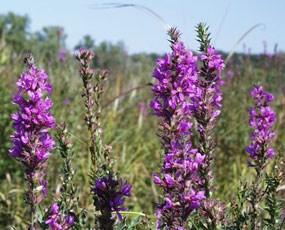
NPS Non-native species are also referred to as introduced, exotic, or alien species. The National Park Service defines non-natives as species that occur in a given place as a result of direct, indirect, deliberate, or accidental actions by humans. Plant species that are brought into an area as food, fiber, or ornamental landscape plantings can "jump the fence" and become established in the wild. Likewise, non-native animal species can be introduced into an area deliberately, for agricultural use or fish stocking; or by "hitching a ride" on objects like boat hulls and outboard motors. Many species find their way to new locations in crop seed, soil, or nursery stock. Although many non-native species have had a positive impact on our society, primarily in agriculture, these species would not have evolved with the indigenous species and are therefore not a natural component of the ecological system. In extreme cases, invasive non-native species can displace indigenous species, thereby degrading the integrity and diversity of native communities. Non-native species can also become pests, such as gypsy moths, Asian lady beetles, zebra mussels, and feral hogs. There are currently about 13 non-native plant species being targeted for action in the Riverway that are of high management concern. Purple loosestrife, Buckthorn, Eurasian watermilfoil,Garlic mustard and Grecian foxglove are among the Riverway's invasive plants. Purple loosestrife, although beautiful, is a noxious weed, well known for its capacity to rapidly invade wetlands, replace native vegetation and dominate those habitats at the expense of turtles, birds and other animals. Buckthorn is primarily found in forests and field edges and can create solid stands. Garlic mustard is an early spring flower that can replace native spring ephemeral wildflowers and dominate the understory of deciduous forests and woodlands. To learn more... Non-native animals are also a concern on the Riverway. Zebra mussels, Rusty Crayfish, Asian carp, gypsy moth and Emerald ash borer populations can explode in numbers and force native species from their habitat or impact species they feed on. This can alter entire biological communities. Zebra mussels are the most notorious Riverway invader because they can wreak havoc on river biology, recreation and industry. |
Last updated: March 9, 2022
